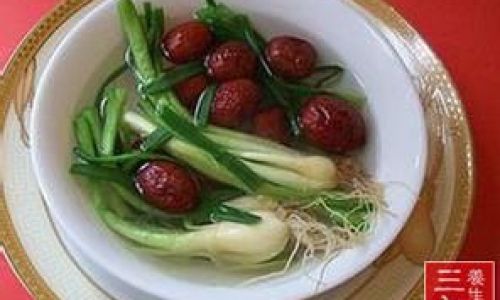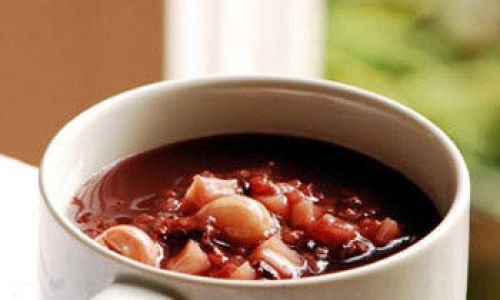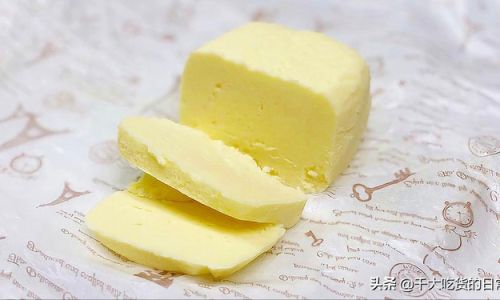Introduction
Konjac root, scientifically known as Amorphophallus konjac, is a plant native to Asia, particularly China and Japan. It has gained significant popularity worldwide due to its nutritional benefits and versatility in culinary applications. The root is primarily used to produce konjac glucomannan, a water-soluble dietary fiber that is highly valued for its ability to aid in digestion, lower cholesterol levels, and manage blood sugar. However, one of the most notable drawbacks of working with konjac root is its inherent fishy odor, which can be off-putting for many individuals. This article delves into the various strategies and techniques one can employ to effectively address and minimize the fishy odor of konjac root, ensuring a more pleasant culinary experience.

Understanding the Source of the Fishy Odor
Before diving into the solutions, it is crucial to understand the source of the fishy odor associated with konjac root. The odor is primarily attributed to the presence of certain sulfur compounds within the plant. These compounds, particularly sulfur-containing amino acids like cysteine and methionine, undergo degradation during processing or cooking, releasing volatile sulfur compounds that impart the characteristic fishy aroma.
Initial Preparation Techniques
-
Thorough Washing
The first step in addressing the fishy odor is to ensure that the konjac root is thoroughly washed before any further processing. This helps to remove any surface contaminants, dirt, or residual chemicals that may contribute to or exacerbate the odor. Use cold running water to rinse the root thoroughly, paying special attention to any crevices or rough surfaces. -
Peeling and Trimming
Peeling the outer layer of the konjac root can also help reduce the fishy odor, as this layer often contains higher concentrations of the sulfur compounds. Use a sharp knife to carefully peel away the outer skin, ensuring that you do not cut too deeply into the flesh of the root, which can waste the edible portion. Additionally, trim away any bruised, damaged, or discolored areas, as these are more likely to harbor off-flavors. -
Soaking
Soaking the konjac root in water can further help to draw out some of the sulfur compounds. Place the peeled and trimmed root in a bowl of cold water and allow it to soak for several hours or overnight. Change the water periodically to ensure that the dissolved compounds are removed from the soaking environment. Some chefs recommend adding a small amount of vinegar or lemon juice to the soaking water, as these acids can help neutralize the sulfur compounds.
Cooking and Processing Methods
-
Boiling
Boiling konjac root is a common method used to soften it for further processing, such as making konjac noodles or jelly. However, boiling can also help to reduce the fishy odor by volatizing some of the sulfur compounds. Place the konjac root in boiling water and cook for about 10-15 minutes, or until it becomes tender. Be sure to use a lid that has a small vent or keep the lid slightly ajar to allow the volatile compounds to escape. -
Blanching
Blanching is a quick immersion cooking process that involves plunging the konjac root into boiling water for a short period, followed by an immediate transfer to ice water to stop the cooking process. This method can help to retain the color and texture of the root while also reducing the fishy odor. Blanch for about 2-3 minutes, then transfer to ice water and let it cool completely before proceeding with further processing. -
Steaming
Steaming konjac root is another effective method for reducing the fishy odor while preserving the nutrients and flavors. Place the root in a steamer basket over boiling water and steam for about 15-20 minutes, or until tender. The enclosed environment of the steamer helps to trap and condense the volatile compounds, which can then be discarded with the steam. -
Baking
Baking konjac root at a low temperature can also help to minimize the fishy odor. Preheat your oven to around 200°F (93°C) and place the peeled and sliced root on a baking sheet lined with parchment paper. Bake for about 1-2 hours, or until the root is dry and slightly crispy. The low temperature and extended cooking time allow the volatile compounds to slowly escape and be dispersed throughout the oven.
Advanced Techniques for Odor Reduction

-
Chemical Extraction
For those looking for a more industrial or scientific approach, chemical extraction methods can be employed to remove the sulfur compounds from konjac root. Techniques such as solvent extraction, steam distillation, or supercritical fluid extraction can be used to selectively extract and remove the odor-causing compounds. However, these methods require specialized equipment and expertise, and may not be feasible for home use. -
Enzymatic Treatment
Enzymatic treatment involves using specific enzymes to break down the sulfur compounds in konjac root. Enzymes such as peroxidase or catalase can be applied to the root, either before or during processing, to catalyze the breakdown of the sulfur compounds into less odorous products. This method requires careful control of the enzyme concentration, temperature, and pH to ensure optimal activity and minimal impact on the texture and flavor of the final product. -
Microbial Fermentation
Microbial fermentation is another advanced technique that can be used to reduce the fishy odor of konjac root. By inoculating the root with specific microorganisms, such as lactic acid bacteria or yeast, the sulfur compounds can be metabolized into less odorous compounds. This method not only reduces the odor but also adds beneficial probiotics and enhances the nutritional profile of the final product. However, fermentation requires precise control of the fermentation conditions, including temperature, pH, and oxygen levels, to avoid off-flavors and ensure product safety.
Post-Processing Techniques
-
Deodorization
After processing, konjac products can be subjected to deodorization treatments to further reduce any residual fishy odor. Techniques such as vacuum distillation, water distillation, or steam stripping can be used to remove volatile compounds from the final product. These methods involve exposing the product to reduced pressure or steam to volatize and remove the odor-causing compounds. -
Flavor Masking
If complete odor removal is not feasible, flavor masking can be employed to cover up the fishy odor. Adding strong-flavored ingredients such as garlic, onions, spices, or herbs can help to mask the odor and enhance the overall flavor profile of the final product. Be sure to use complementary flavors that do not clash with the intended use of the konjac product.
-
Packaging and Storage
Proper packaging and storage can also help to minimize the re-emergence of the fishy odor in konjac products. Use airtight containers or vacuum-sealed packaging to prevent the ingress of oxygen, which can catalyze the formation of volatile compounds. Store the products in a cool, dark place to slow down any chemical reactions that may lead to the development of off-flavors.
Conclusion
The fishy odor of konjac root can be a significant challenge for those looking to incorporate this nutritious plant into their culinary repertoire. However, by employing a combination of initial preparation techniques, cooking and processing methods, advanced odor reduction techniques, and post-processing strategies, the fishy odor can be effectively minimized or even eliminated. With careful planning and execution, konjac root can be enjoyed for its unique texture and health benefits without being overshadowed by its characteristic odor. Whether you are a home cook, a professional chef, or a food manufacturer, there are numerous techniques available to help you create delicious and odor-free konjac-based dishes and products.




0 comments